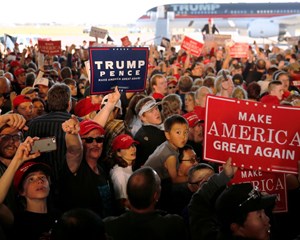In March, activists appealed to Congress to steer COVID relief money to election administration. Led by the Leadership Conference on Civil and Human Rights, more than 150 organizations signed a letter to every member of Congress seeking $2 billion in election funding. It was somewhat successful: the CARES Act, passed later that month, contained $400 million in grants to state election administrators. But the next tranche of relief funding didn't add to that number. It wasn't going to be enough.
今年3月,活動人士呼吁國會將COVID - 19救災資金撥給選舉管理部門。在民權與人權領袖會議的領導下,150多個組織簽署了一封致國會每一位議員的信,要求獲得20億美元的選舉資金。這在一定程度上是成功的:當月晚些時候通過的《關愛法案》(CARES Act)為州選舉管理人員提供了4億美元的撥款。但下一筆救助資金并沒有增加這個數字。這還不夠。
Private philanthropy stepped into the breach. An assortment of foundations contributed tens of millions in election-administration funding. The Chan Zuckerberg Initiative chipped in $300 million. "It was a failure at the federal level that 2,500 local election officials were forced to apply for philanthropic grants to fill their needs," says Amber McReynolds, a former Denver election official who heads the nonpartisan National Vote at Home Institute.
私人慈善機構填補了空缺。各種各樣的基金會為選舉管理提供了數千萬美元的資金。陳-扎克伯格倡議也捐助了3億美元。“2500名地方選舉官員被迫申請慈善資助以滿足他們的需求,這是聯邦層面的失敗,”前丹佛選舉官員、無黨派全國選舉協會(National Vote at Home Institute)主席安布爾·麥克里諾茲(Amber McReynolds)表示。

McReynolds' two-year-old organization became a clearinghouse for a nation struggling to adapt. The institute gave secretaries of state from both parties technical advice on everything from which vendors to use to how to locate drop boxes. Local officials are the most trusted sources of election information, but few can afford a press secretary, so the institute distributed communications tool kits. In a presentation to Podhorzer's group, McReynolds detailed the importance of absentee ballots for shortening lines at polling places and preventing an election crisis.
McReynolds成立兩年的組織變成了一個努力適應的國家的信息交流中心。該研究所向兩黨國務卿提供技術建議,涉及從使用哪家供應商到如何定位投遞箱等各個方面。地方官員是最值得信賴的選舉信息來源,但幾乎沒有人負擔得起新聞秘書的費用,因此研究所分發了通訊工具包。在向Podhorzer的小組做報告時,mccreynolds詳細闡述了缺席投票對縮短投票站排隊和防止選舉危機的重要性。
The institute's work helped 37 states and D.C. bolster mail voting. But it wouldn't be worth much if people didn't take advantage. Part of the challenge was logistical: each state has different rules for when and how ballots should be requested and returned. The Voter Participation Center, which in a normal year would have deployed canvassers door-to-door to get out the vote, instead conducted focus groups in April and May to find out what would get people to vote by mail. In August and September, it sent ballot applications to 15 million people in key states, 4.6 million of whom returned them. In mailings and digital ads, the group urged people not to wait for Election Day. "All the work we have done for 17 years was built for this moment of bringing democracy to people's doorsteps," says Tom Lopach, the center's CEO.
該研究所的工作幫助37個州和華盛頓特區支持郵寄投票。但如果人們不利用這一點,它就不值錢了。部分挑戰是后勤方面的:每個州對于何時以及如何請求和返回選票都有不同的規定。在正常情況下,選民參與中心會派出游說者挨家挨戶地動員選民投票,但今年4月和5月,中心組織了焦點小組,找出什么可以促使人們通過郵件投票。在8月和9月,它向關鍵州的1500萬人發送了投票申請,其中460萬人返回。該組織通過郵件和數字廣告敦促人們不要等待選舉日。該中心的首席執行官Tom Lopach說:“我們17年來所做的一切都是為了把民主帶到人們家門口的這一刻。”
譯文由可可原創,僅供學習交流使用,未經許可請勿轉載。











